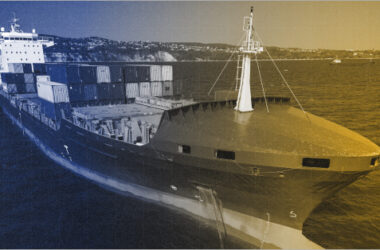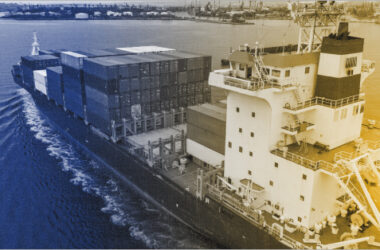International trade has many moving components such as contracts, carriers, customs and compliance. In order to reduce this complexity, the International Chamber of Commerce (ICC) came up with a set of standard trade terms called Incoterms. These assist buyers and sellers in understanding their roles and responsibilities in cross-border transactions.
Cost and Freight (CFR) is one of the popular Incoterms. It is a key factor in deciding who incurs what costs and when the risk transfer happens in the process of ocean freight shipping. In the article, we shall deconstruct what CFR is, how it functions, its major roles and the pros and cons of applying it in international trade.
Let’s proceed!
What Does the Shipping Term CFR Mean?
Cost and Freight (abbreviated as CFR) is an Incoterm specifically used in maritime and ocean shipping. Under this term, it is the duty of the seller to deliver goods at the port specified by the buyer and meet the freight costs necessary to deliver the goods to the destination port.
When the goods have been loaded on to the vessel at the port of shipment, however, the risk is transferred to the buyer, though the freight is still paid by the seller until the goods arrive at the destination port.
The CFR incoterm agreement should specifically refer to the named port of destination and the exact point within the port where the transfer of costs takes place. CFR is particularly applicable when transporting bulk, oversized, or heavy items which do not fit in the standard containers or are overweight.
Understanding the Responsibilities of a Seller and Buyer Under the CFR Incoterm
The Cost and Freight (CFR) Incoterm establishes the precise responsibilities of both the buyer and the seller regarding international trade transactions that involve sea freight. The following is a breakdown of the responsibilities on each side.
Seller’s Responsibilities Under CFR Incoterm
- Export Packaging: The seller must ensure that goods are securely packaged according to international shipping standards.
- Loading Charges: The seller bears the cost of loading goods at the departure point.
- Delivery to Port: It’s the seller’s duty to transport goods to the port or terminal named in the contract.
- Export Documentation: All export paperwork — including customs clearance, taxes, and duties — falls under the seller’s responsibility.
- Origin Terminal Charges: The seller covers handling and other terminal costs incurred at the port of origin.
- Loading on Vessel: The seller is accountable for loading goods onto the main carrier (usually a ship).
- Main Freight Costs: The seller pays for the ocean freight to move goods to the destination port.
Buyer’s Responsibilities Under Cost and Freight (CFR) Incoterm
- Destination Port Charges: Once goods arrive, the buyer pays for unloading and terminal handling fees at the destination port.
- Delivery to Final Destination: The buyer arranges transportation from the destination port to the final delivery point.
- Unloading Costs: The buyer covers expenses for unloading at the final delivery location.
- Import Formalities: All import-related duties, taxes, and customs clearance are the buyer’s responsibility.
Advantages and Disadvantages of Using CFR Incoterms
Like most trade terms, CFR Incoterm offers distinct benefits and certain drawbacks. Understanding both helps businesses make informed decisions.
Advantages of CFR
- Simplifies the Process for Buyers: Since the seller handles most export and freight arrangements, buyers can focus on their core operations.
- Clear Cost Estimation: With the seller covering freight costs, buyers get a transparent view of overall shipping expenses.
- Seller Expertise in Exporting: Sellers familiar with export logistics can secure better freight rates and ensure smooth handling.
- Flexibility in Insurance: Under CFR, the seller isn’t obligated to provide insurance, allowing buyers to select their preferred coverage.
- Fewer Hidden Costs: Because freight is pre-arranged, the risk of unexpected shipping fees is minimized.
Disadvantages of CFR
- Early Transfer of Risk: The moment goods are loaded onto the vessel, all risks shift to the buyer — even though freight costs are still paid by the seller.
- Insurance Burden on Buyer: Buyers must secure their own insurance coverage to protect goods during transit.
- Complex Import Documentation: Handling import clearance at the destination can be tedious for buyers unfamiliar with local regulations.
- Additional Costs for Buyers: Despite the seller covering freight, buyers must pay unloading, inland transport, customs duties, and other post-arrival charges.
When Should Your Business Use CFR?
To maximize the benefits of a Cost and Freight (CFR) arrangement, businesses should know when this Incoterm makes the most sense.
- For Bulk or Non-Containerized Cargo: Ideal for transporting automobiles, heavy machinery, or raw materials that don’t fit into standard containers.
- When Sellers Have Better Shipping Networks: Sellers with strong ties to carriers can negotiate favorable freight rates, which can benefit buyers indirectly.
- For Simplified Shipping Management: CFR allows sellers to manage transportation up to the port of destination, reducing the buyer’s logistical burden.
- For Businesses Wanting Control at the Destination: Under CFR, buyers handle customs clearance and inland transport — perfect for those wanting control over the final leg of delivery.
By using CFR strategically, businesses can streamline operations, save costs, and manage responsibilities more effectively across international borders.
Final Thoughts:
The CFR (Cost and Freight) Incoterm is a cornerstone of global shipping. It clearly defines how costs and responsibilities are divided between the buyer and seller — particularly for sea and ocean freight transactions. CFR provides a structured framework for cost management, risk transfer, and operational efficiency, especially for bulk or non-containerized cargo.
However, even with clear responsibilities, international shipping remains unpredictable. Cargo can still be exposed to weather disruptions, handling damage, or unforeseen incidents at sea.
That’s why it’s essential for importers and exporters to safeguard their goods with a comprehensive Marine Insurance Policy. A Marine Open Policy is a cost-effective way to ensure continuous coverage without buying a new policy for each consignment. These policies offer year-round protection for multiple shipments.
At BimaKavach, we understand the complexities of global trade. We help you select reliable Marine Insurance solutions designed to safeguard your cargo from unexpected setbacks. Whether you ship occasionally or frequently, our customised solutions can provide the security, reliability, and peace of mind your business needs to operate confidently across international waters.
Talk to our seasoned experts today and choose the best Marine Insurance Policy to secure your shipments.








